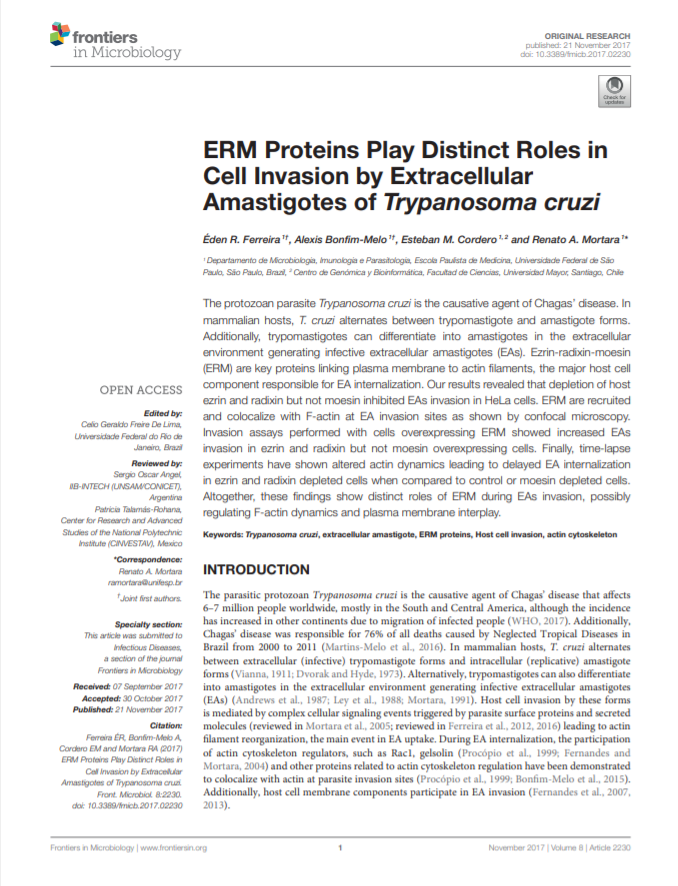ERM proteins play distinct roles in cell invasion by extracellular amastigotes of Trypanosoma cruzi

Fecha
2017Autor
Ferreira É.R., Bonfim-Melo A., Mortara R.A.
Cordero, Esteban M. [Centro de Genómica y Bioinformatica, Facultad de Ciencias, Universidad Mayor, Chile]
Ubicación geográfica
Notas
HERRAMIENTAS
Acceda a títulos restringidos
¿Cómo descargar?Resumen
The protozoan parasite Trypanosoma cruzi is the causative agent of Chagas' disease. In mammalian hosts, T. cruzi alternates between trypomastigote and amastigote forms. Additionally, trypomastigotes can differentiate into amastigotes in the extracellular environment generating infective extracellular amastigotes (EAs). Ezrin-radixin-moesin (ERM) are key proteins linking plasma membrane to actin filaments, the major host cell component responsible for EA internalization. Our results revealed that depletion of host ezrin and radixin but not moesin inhibited EAs invasion in HeLa cells. ERM are recruited and colocalize with F-actin at EA invasion sites as shown by confocal microscopy. Invasion assays performed with cells overexpressing ERM showed increased EAs invasion in ezrin and radixin but not moesin overexpressing cells. Finally, time-lapse experiments have shown altered actin dynamics leading to delayed EA internalization in ezrin and radixin depleted cells when compared to control or moesin depleted cells. Altogether, these findings show distinct roles of ERM during EAs invasion, possibly regulating F-actin dynamics and plasma membrane interplay.
URI
https://www.frontiersin.org/articles/10.3389/fmicb.2017.02230/fullhttps://doi.org/10.3389/fmicb.2017.02230
https://www.ncbi.nlm.nih.gov/pmc/articles/PMC5702390/pdf/fmicb-08-02230.pdf
http://repositorio.umayor.cl/xmlui/handle/sibum/6920
Coleccion/es a la/s que pertenece:
Si usted es autor(a) de este documento y NO desea que su publicación tenga acceso público en este repositorio, por favor complete el formulario aquí.